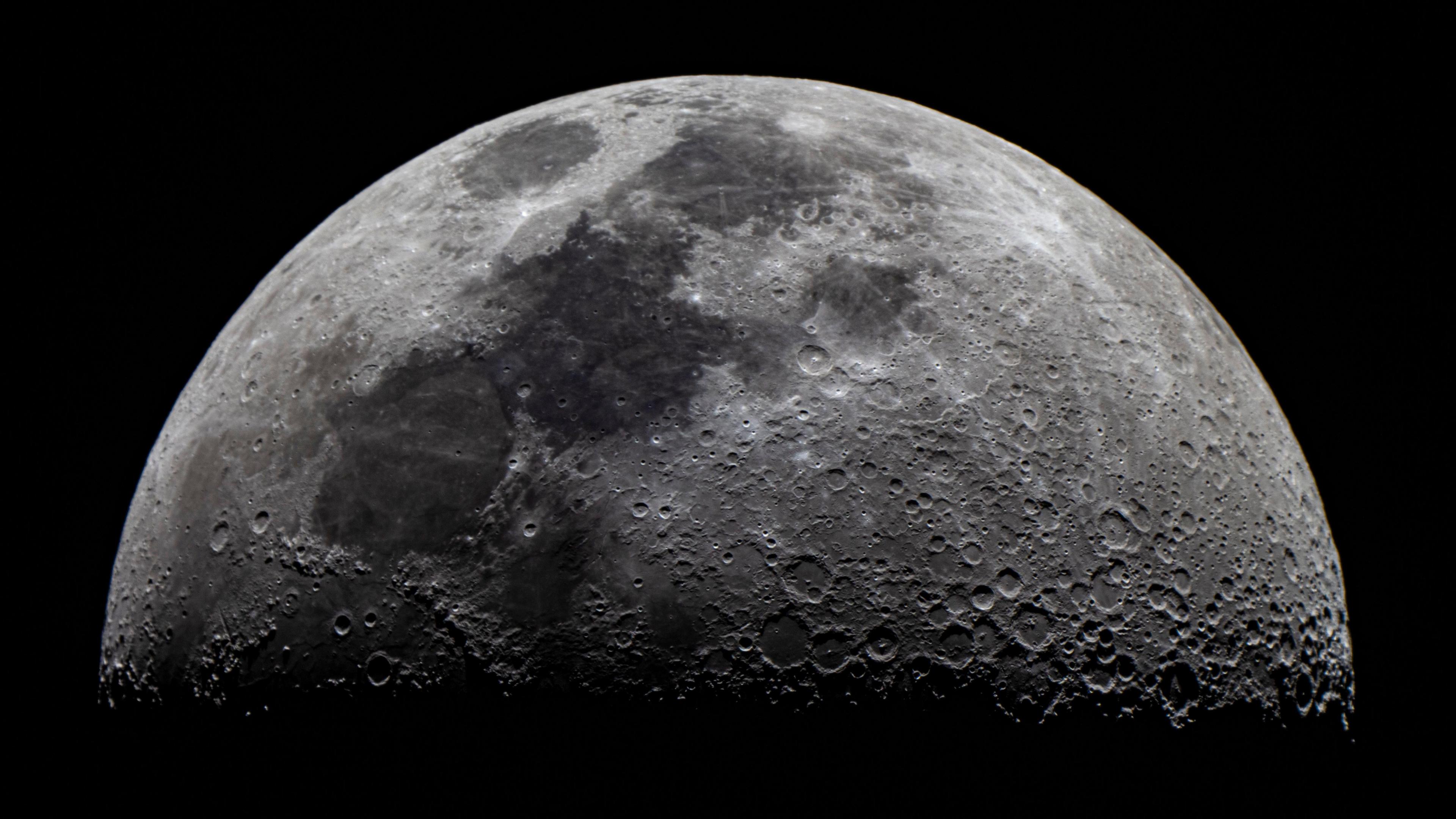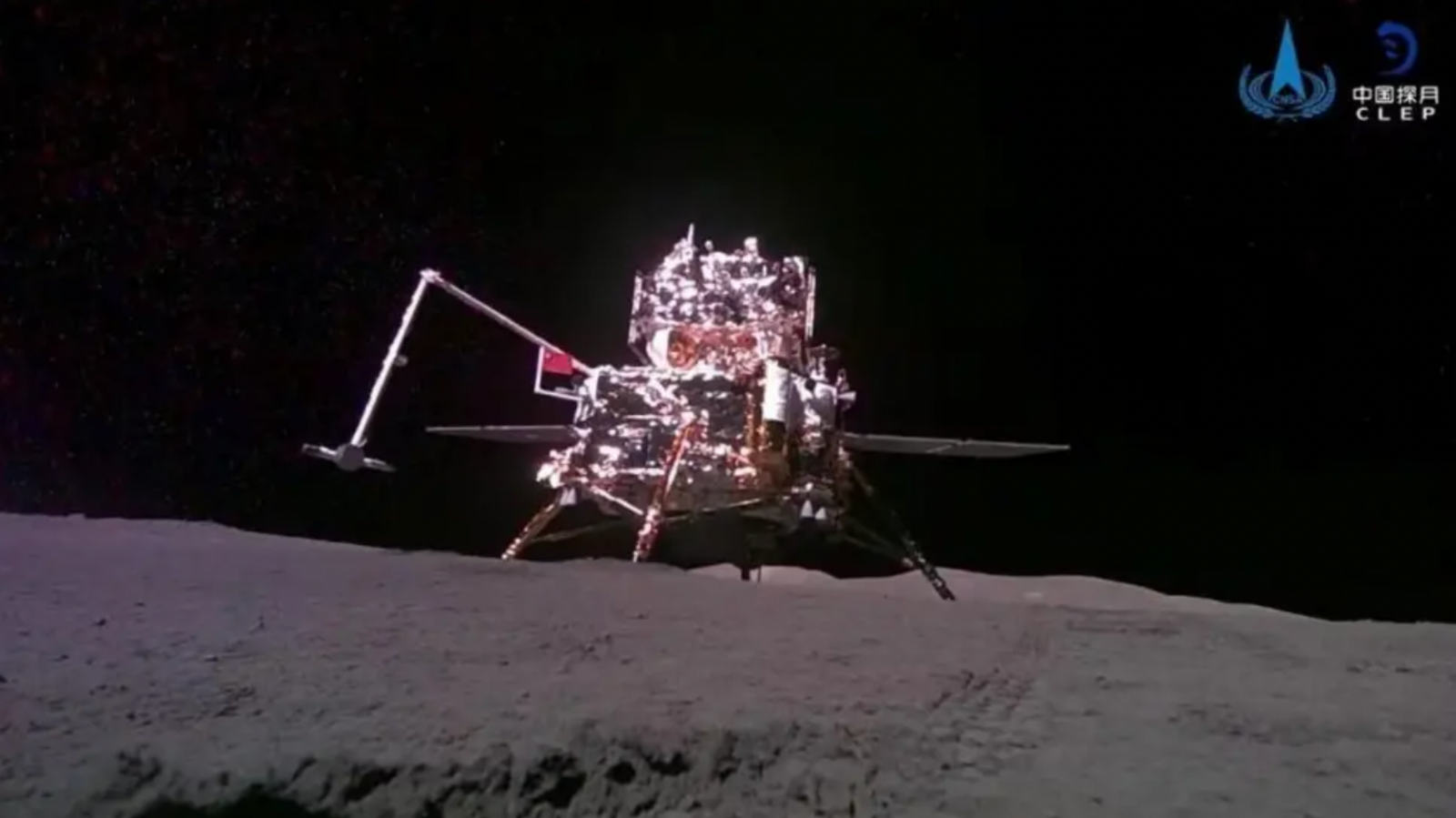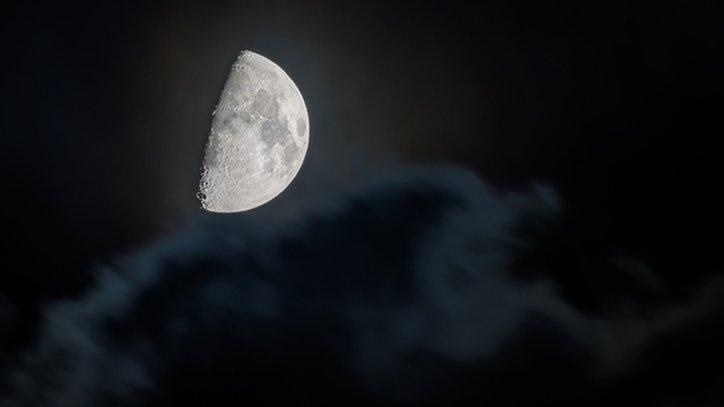Scientists find evidence of erupting space volcanoes on the Moon

Scientists have discovered new information about the far side of the Moon
- Published
For a long time, scientists have been puzzled about the types of rocks that make up the far side of the Moon that we can't see.
However, US and Chinese researchers have now made a discovery.
They have found evidence of super volcanoes that erupted billions of years ago and created craters in the Moon's surface.
One piece of volcanic rock found is estimated to be from 4.2 billion years ago!
Scientists build 'Moon on Earth' in Germany
- Published27 September 2024
What is 2024 PT5? Earth to get second 'mini' moon
- Published25 September 2024
The Moon is much older than anyone knew
- Published25 October 2023
The findings came from China's Chang'e-6 mission - the first spacecraft to have successfully landed and launched from the far side of the Moon.
During this landing, 2kg of lunar rocks and soil were collected.
These were then brought back to Earth (in June) and have now been analysed by research teams.
Two separate teams found fragments of volcanic rock that were about 2.8 billion years old, and one piece was 4.2 billion years old.

The Chang'e-6 mission brought the first rock samples of the far side of the Moon back to Earth
The scientists published their findings in the Nature and Science journals on Friday.
"This is an incredibly exciting study," Professor Qiuli Li from the Institute of Geology and Geophysics wrote.
"It is the first geochronology study to come from the Chang’e-6 samples and will be of immense importance to the lunar and planetary science community."
While scientists already knew a lot about the near side of the Moon, these findings provide some answers about the far side.
- Published20 April 2024
- Published2 October 2014
- Published9 April 2024

